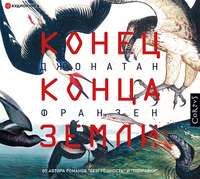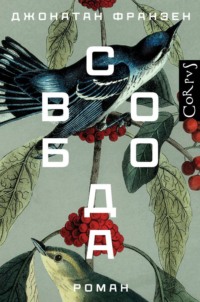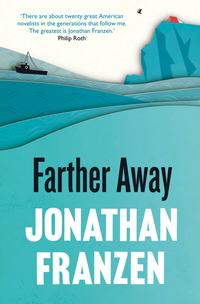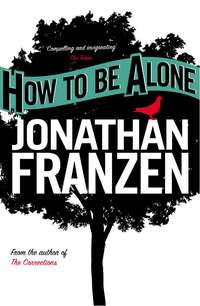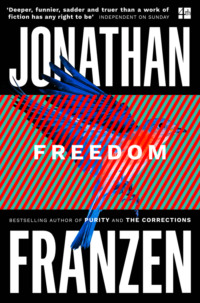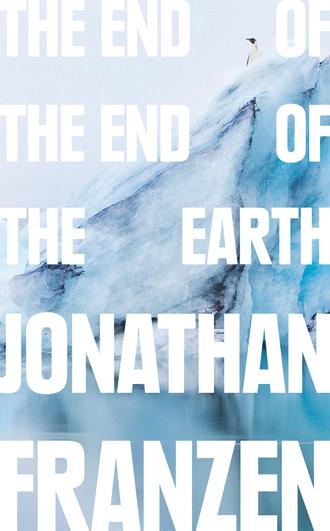
Полная версия
The End of the End of the Earth

Three years ago, I was in a state of rage about climate change. The Republican Party was continuing to lie about the absence of a scientific consensus on climate—Florida’s Department of Environmental Protection had gone so far as to forbid its employees to write the words climate change, after Florida’s governor, a Republican, insisted that it wasn’t a “true fact”—but I wasn’t much less angry at the left. I’d read a new book by Naomi Klein, This Changes Everything, in which she assured the reader that, although “time is tight,” we still have ten years to radically remake the global economy and prevent global temperatures from rising by more than two degrees Celsius by the end of the century. Klein’s optimism was touching, but it, too, was a kind of denialism. Even before the election of Donald Trump, there was no evidence to suggest that humanity is capable—politically, psychologically, ethically, economically—of slashing carbon emissions quickly and deeply enough to change everything. Even the European Union, which had taken the early lead on climate, and was fond of lecturing other regions on their irresponsibility, needed only a recession in 2009 to shift its focus to economic growth. Barring a worldwide revolt against free-market capitalism in the next ten years—the scenario that Klein contended could still save us—the most likely rise in temperature this century is on the order of six degrees. We’ll be lucky to avoid a two-degree rise before the year 2030.
In a polity ever more starkly divided, the truth about global warming was even less convenient to the left than to the right. The right’s denials were odious lies, but at least they were consistent with a certain cold-eyed political realism. The left, having excoriated the right for its intellectual dishonesty and turned climate denialism into a political rallying cry, was now in an impossible position. It had to keep insisting on the truth of climate science while persisting in the fiction that collective world action could stave off the worst of it: that universal acceptance of the facts, which really might have changed everything in 1995, could still change everything. Otherwise, what difference did it make if the Republicans quibbled with the science?
Because my sympathies were with the left—reducing carbon emissions is vastly better than doing nothing; every half degree helps—I also held it to a higher standard. Denying the dark reality, pretending that the Paris Accord could avert catastrophe, was understandable as a tactic to keep people motivated to reduce emissions; to keep hope alive. As a strategy, though, it did more harm than good. It ceded the ethical high ground, insulted the intelligence of unpersuaded voters (“Really? We still have ten years?”), and precluded frank discussion of how the global community should prepare for drastic changes, and how nations like Bangladesh should be compensated for what nations like the United States have done to them.
Dishonesty also skewed priorities. In the past twenty years, the environmental movement had become captive to a single issue. Partly out of genuine alarm, partly also because foregrounding human problems was politically less risky—less elitist—than talking about nature, the big environmental NGOs had all invested their political capital in fighting climate change, a problem with a human face. The NGO that particularly enraged me, as a bird lover, was the National Audubon Society, once an uncompromising defender of birds, now a lethargic institution with a very large PR department. In September 2014, with much fanfare, that PR department had announced to the world that climate change was the number-one threat to the birds of North America. The announcement was both narrowly dishonest, because its wording didn’t square with the conclusions of Audubon’s own scientists, and broadly dishonest, because not one single bird death could be directly attributed to human carbon emissions. In 2014, the most serious threats to American birds were habitat loss and outdoor cats. By invoking the buzzword of climate change, Audubon got a lot of attention in the liberal media; another point had been scored against the science-denying right. But it was not at all clear how this helped birds. The only practical effect of Audubon’s announcement, it seemed to me, was to discourage people from addressing the real threats to nature in the present.

I was so angry that I decided that I’d better write an essay. I began with a jeremiad against the National Audubon Society, broadened it into a scornful denunciation of the environmental movement generally, and then started waking up in the night in a panic of remorse and doubt. For the writer, an essay is a mirror, and I didn’t like what I was seeing in this one. Why was I excoriating fellow liberals when the denialists were so much worse? The prospect of climate change was every bit as sickening to me as to the groups I was attacking. With every additional degree of global warming, further hundreds of millions of people around the world would suffer. Wasn’t it worth an all-out effort to achieve a reduction of even half of one degree? Wasn’t it obscene to be talking about birds when children in Bangladesh were threatened? Yes, the premise of my essay was that we have an ethical responsibility to other species as well as to our own. But what if that premise was false? And, even if it was true, did I really care personally about biodiversity? Or was I just a privileged white guy who liked to go birding? And not even a pure-hearted birder—a lister!
After three nights of doubting my character and motives, I called Henry Finder and told him I couldn’t write the piece. I’d done plenty of ranting about climate to my friends and to like-minded conservationists, but it was like a lot of the ranting that happens online, where you’re protected by the impromptu nature of the writing and by the known friendliness of your audience. Trying to write a finished thing, an essay, had made me aware of the sloppiness of my thinking. It had also enormously increased the risk of shame, because the writing wasn’t casual, and because it was going out to an audience of probably hostile strangers. Following Henry’s admonition (“Therefore”), I’d come to think of the essayist as a firefighter, whose job, while everyone else is fleeing the flames of shame, is to run straight into them. But I had a lot more to fear now than my mother’s disapproval.
My essay might have stayed abandoned if I hadn’t already clicked a button on Audubon’s website, affirming that, yes, I wanted to join it in fighting climate change. I’d only done this to gather rhetorical ammunition to use against Audubon, but a deluge of direct-mail solicitations had followed from that click. I got at least eight of them in six weeks, all of them asking me to give money, along with a similar deluge in my email in-box. A few days after speaking to Henry, I opened one of the emails and found myself looking at a picture of myself—luckily a flattering image, taken in 2010 for Vogue magazine, which had dressed me up better than I dress myself and posed me in a field with my binoculars, like a birder. The headline of the email was something like “Join Author Jonathan Franzen in Supporting Audubon.” It was true that, a few years earlier, in an interview with Audubon magazine, I’d politely praised the organization, or at least its magazine. But no one had asked for my permission to use my name and image for solicitation. I wasn’t sure the email was even legal.
A more benign impetus to return to the essay came from Henry. As far as I know, Henry couldn’t care less about birds, but he seemed to see something in my argument that our preoccupation with future catastrophes discourages us from tackling solvable environmental problems in the here and now. In an email to me, he gently suggested that I lose the tone of prophetic scorn. “This piece will be more persuasive,” he wrote in another, “if, ironically, it’s more ambivalent, less polemical. You’re not whaling on folks who want us to pay attention to climate change and emission reductions. But you’re attentive to the costs. To what the discourse pushes to the margins.” Email by email, revision by revision, Henry nudged me toward framing the essay not as a denunciation but as a question: How do we find meaning in our actions when the world seems to be coming to an end? Much of the final draft was devoted to a pair of well-conceived regional conservation projects, in Peru and Costa Rica, where the world really is being made a better place, not just for wild plants and wild animals but for the Peruvians and Costa Ricans who live there. Work on these projects is personally meaningful, and the benefits are immediate and tangible.
In writing about the two projects, I hoped that one or two of the big charitable foundations, the ones spending tens of millions of dollars on biodiesel development or on wind farms in Eritrea, might read the piece and consider investing in work that produces tangible results. What I got instead was a missile attack from the liberal silo. I’m not on social media, but my friends reported that I was being called all sorts of names, including “birdbrain” and “climate-change denier.” Tweet-size snippets of my essay, retweeted out of context, made it sound as if I’d proposed that we abandon the effort to reduce carbon emissions, which was the position of the Republican Party, which, by the polarizing logic of online discourse, made me a climate-change denier. In fact, I’m such a climate-science accepter that I don’t even bother having hope for the ice caps. All I’d denied was that a right-minded international elite, meeting in nice hotels around the world, could stop them from melting. This was my crime against orthodoxy. Climate now has such a lock on the liberal imagination that any attempt to change the conversation—even trying to change it to the epic extinction event that human beings are already creating without the help of climate change—amounts to an offense against religion.
I did have sympathy for the climate-change professionals who denounced the essay. They’d been working for decades to raise the alarm in America, and they finally had President Obama on board with them; they had the Paris Accord. It was an inopportune time to point out that drastic global warming is already a done deal, and that it seems unlikely that humanity is going to leave any carbon in the ground, given that, even now, not one country in the world has pledged to do it. I also understood the fury of the alternative-energy industry, which is a business like any other. If you allow that renewable-energy projects are only a moderating tactic, unable to reverse the damage that past carbon emissions will continue to do for centuries, it opens the door to other questions about the business. Like, did we really need quite so many windmills? Did they have to be placed in ecologically sensitive areas? And the solar farms in the Mojave Desert—wouldn’t it make more sense to cover the city of Los Angeles with solar panels and spare the open space? Weren’t we sort of destroying the natural world in order to save it? I believe it was an industry blogger who called me a birdbrain.
As for Audubon, the fund-raising email should have warned me about the character of its management. But I was still surprised by its response to the essay, which was to attack, ad hominem, the person whose name and image it had blithely appropriated two months earlier. My essay had, yes, given Audubon some tough love. I wanted it to cut out the nonsense, stop talking about fifty years from now, and be more aggressive in defending the birds that both it and I love. But apparently all Audubon could see was a threat to its membership numbers and its fund-raising efforts, and so it had to negate me as a person. I’m told the president of Audubon fired off four different salvos at me personally. This is what presidents do now.
And it worked. Without even reading those salvos—simply from knowing that other people were reading them—I felt ashamed. I felt the way I’d felt in eighth grade, shunned by the crowd and called names that shouldn’t have hurt but did. I wished I’d listened to my panics in the night and kept my opinions to myself. In a state of some anguish, I called up Henry and dumped all my shame and regret on him. He replied, in his barely legible way, that the online response was only weather. “With public opinion,” he said, “there’s weather, and then there’s climate. You’re trying to change the climate, and that takes time.”
It didn’t matter if I believed this or not. It was enough to feel that one person, Henry, didn’t hate me. I consoled myself with the thought that, although climate is too vast and chaotic for any individual to alter it, the individual can still find meaning in trying to make a difference to one afflicted village, one victim of global injustice. Or to one bird, or one reader. After the online flames had died down, I started hearing privately from conservation workers who shared my frustrations but couldn’t afford to express them. I didn’t hear from many people, but there didn’t have to be many. My feeling in each case was the same: The person I wrote the essay for is you.

But now, two and a half years later, as ice shelves crumble and the Twitter president pulls out of the Paris Accord, I’m not so sure. Now I can admit to myself that I didn’t write the essay just to hearten a few conservationists and deflect some charitable dollars to better causes. I really did want to change the climate. I still do. I share, with the very people my essay criticized, the recognition that global warming is the issue of our time, perhaps the biggest issue in all of human history. Every one of us is now in the position of the indigenous Americans when the Europeans arrived with guns and smallpox: our world is poised to change vastly, unpredictably, and mostly for the worse. I don’t have any hope that we can stop the change from coming. My only hope is that we can accept the reality in time to prepare for it humanely, and my only faith is that facing it honestly, however painful this may be, is better than denying it.
If I were writing the essay today, I might say all this. The mirror of the essay, as it was published, reflected an angry bird-loving misfit who thinks he’s smarter than the crowd. That character may be me, but it’s not the whole me, and a better essay would have reflected that. In a better essay, I might still have given Audubon the rebuke it deserved, but I would have found my way to more sympathy for the other people I was angry at: for the climate activists, who for twenty years had watched their path to victory narrow sickeningly, as carbon emissions mounted and the necessary emissions-reduction targets grew ever more unrealistic, and for the alternative-energy workers who had families to feed and were trying to see beyond petroleum, and for the environmental NGOs that thought they’d finally found an issue that could wake the world up, and for the leftists who, as neoliberalism and its technologies reduced the electorate to individual consumers, saw climate change as the last strong argument for collectivism. I would especially have tried to remember all the people who need more hope in their lives than a depressive pessimist does, the people for whom the prospect of a hot, calamity-filled future is unbearably sad and frightening, and who can be forgiven for not wanting to think about it. I would have kept revising.

My girlfriend, V, and I were finishing college, with a summer to burn before the next thing, and New York beckoned. V went up to the city and signed a three-month lease on the apartment of a Columbia student, Bobby Atkins, who may have been the son of the creator of the Atkins Diet, or maybe we just enjoyed imagining that he was. His place, on the southwest corner of 110th Street and Amsterdam, had two small bedrooms and was irremediably filthy. We arrived in June with a fifth of Tanqueray, a carton of Marlboro Lights, and Marcella Hazan’s Italian cookbook. Someone had left behind a spineless black plush-toy panther, manufactured in Korea, which we liberated and made ours.
We were living on a margin. Before full-scale gentrification, before mass incarceration, the city seemed starkly drawn in black and white. When a young Harlem humorist on the uptown 3 train performed the “magic” act of making every white passenger disappear at Ninety-sixth Street, I felt tried and found guilty of whiteness. Our friend Jon Justice, who that summer had Thomas Pynchon’s V stuffed into the back pocket of his corduroys, was mugged at Grant’s Tomb, where he shouldn’t have been. I was aesthetically attracted to cities but morbidly afraid of being shot. In New York, Amsterdam Avenue was a sharp dividing line, and I stood on the east side of it only once, when I made the mistake of riding a C train to 110th and walking home from there. It was late afternoon and nobody paid attention to me, but I was light-headed with fear. Deepening my impression of menace were the heavy, light-blocking security gates on our windows and the police lock in our entry hall, its steel rod anchored to the floor and angling up to a slot on the front door. I associated it with our next-door neighbor, an elderly white man with raging senile dementia. He would pound on our door or stand on the landing, wearing only pajama bottoms, and asseverate, over and over, using a vile epithet, that his wife was having relations with black men. I was afraid of him, too, and I hated him for naming a racial division we liberal kids accepted in silence.
In theory, V and I were trying to write fiction, but I was oppressed by the summer heat and by the penitentiary gloom of the Atkins place, the cockroaches, the wandering neighbor. V and I fought, wept, made up, and played with our black panther. We practiced cooking and semiotic criticism and ventured out—always going west—to the Thalia, and Hunan Balcony, and Papyrus Books, where I bought the latest issue of Semiotext(e) and dense volumes of theory by Derrida and Kenneth Burke. I don’t remember how I had any money at all. Conceivably my parents, despite their disapproval of New York and of my cohabitation with V, had given me some hundreds of dollars. I do remember sending letters to various magazines, inquiring about paid internships, and being told that I needed to have applied six months earlier.
Luckily, my brother Tom was in New York that summer, doing a loft conversion for the hotshot young photographer Gregory Heisler. Tom, who was then based in Chicago, had come east with a Chicago friend of Heisler’s who wanted to start a renovation business and hoped to pick up some skills from my brother and split the profits. But Heisler could see that Tom had all the know-how. Before long, the friend was sent back to Chicago, leaving Tom without a laborer. This became my job.
Heisler was a portraitist, eventually best known for his double-exposed image of George H. W. Bush on the cover of Time. His loft was at the corner of Broadway and Houston, on the top floor of the Cable Building, then a den of sweatshops, later the home of the Angelika theater. The building was zoned for commercial use, and Tom and Heisler hadn’t bothered with city permits, and so for me, at least, there was a frisson of illegality to the hidden apartment that Tom was building behind the photo studio’s south wall. Heisler wanted every surface in the apartment covered with a trendy gray plastic laminate whose little raised dots made edging it with a router a nightmare. I spent long afternoons in a cloud of acetone fumes, cleaning rubber cement off the laminate, while Tom, in another room, cursed the raised dots.
My main job was to fetch things. Every morning, Tom gave me a shopping list of construction staples and exotica, and I made the rounds of supply stores on the Bowery and Canal Street. East of the Bowery were the dangerous alphabet streets and the projects, a zone of no-go on my mental map of the island. But in the rest of lower Manhattan I found the aesthetic experience I’d been looking for. SoHo’s transformation was still larval, its streets quiet, its iron pillars peeling. Lower Broadway was peopled with garment workers, and the city below Canal seemed hungover from the seventies, as if the buildings were surprised to find themselves still standing. On the Fourth of July weekend, V and Jon Justice and I got up onto the old West Side Elevated Highway (closed but not yet demolished) and went walking under the new World Trade Center towers (brutalist but not yet tragic) and didn’t see another person, white or black, in any direction. Romantically deserted vistas were what I wanted in a city when I was twenty-one.

On the evening of the Fourth, when Morningside Heights began to sound like wartime Beirut, V and I went over to East End Avenue to watch the official fireworks from our friend Lisa Albert’s family’s apartment. I was astonished when her building’s elevator opened directly into the apartment’s front hall. Her family’s cook asked me if I’d like a sandwich, and I said yes, please. It had never occurred to me that my background and Albert’s weren’t more or less the same. I hadn’t imagined that an apartment like hers existed, or that a person only five years older than I was, Greg Heisler, could have a team of assistants at his disposal. He also had a willowy and dumbstrikingly beautiful wife, Pru, who came from Australia and wore airy white summer dresses that made me think of Daisy Buchanan.
The city’s dividing line of wealth was not unrelated to the other dividing line, but it was less distinctly geographical and easier for me to cross. Under the spell of my elite college education, I envisioned overthrowing the capitalist political economy in the near future, through the application of literary theory, but in the meantime my education enabled me to feel at ease on the wealth side of the line. At the formal midtown restaurant where V’s visiting grandmother took the two of us to lunch one day, I was given a blue blazer to wear with my black jeans, and this was all it took for me to pass.
I was too idealistic to want more money than I needed to subsist, too arrogant to envy Heisler, and so to me the rich were mainly a curiosity, interesting for the conspicuousness of both their consumption and their thrift. When V and I visited her other grandparents, at their country estate outside the city, they showed me the little paintings by Renoir and Cézanne in their living room and served us stale store-bought cookies. At Tavern on the Green, where we were taken to dinner by my brother Bob’s in-laws, a pair of psychoanalysts who had an apartment not a lot smaller than Albert’s, I was appalled to learn that if you wanted a vegetable with your steak you had to pay extra for it. The money seemed of no consequence to Bob’s father-in-law, but we noticed that one of the mother-in-law’s shoes was held together with electrical tape. Heisler, too, was given to grand gestures, like flying Tom’s soon-to-be wife out from Chicago for a weekend. But he paid Tom $12,500 for the loft conversion, approximately one-eighth of what it would have cost with a New York contractor.
It was people like Tom and me who didn’t recognize the value of what they had in hand. Tom realized too late that he could easily have charged Heisler two or three times as much, and I left Manhattan, in mid-August, owing $225 to St. Luke’s Hospital. To celebrate the end of the summer and also, I think, our engagement to be married, V and I had gone to dinner at a Cuban restaurant on Columbus Avenue, Victor’s, which her former boyfriend, a Cuban, had frequented. I started with black bean soup and was a few spoonfuls into it when the beans seemed to come alive on my tongue, churning with a kind of malevolent aggression. I reached into my mouth and pulled out a narrow shard of glass. V flagged down our server and complained to him. The server summoned the manager, who apologized, examined the piece of glass, disappeared with it, and then came back to hustle us out of the restaurant. I was pressing a napkin to my tongue to stanch the bleeding. At the front door, I asked if it was okay for me to keep the napkin. “Yes, yes,” the manager said, shutting the door behind us. V and I hailed our only cab of the summer and went directly to St. Luke’s, our neighborhood hospital. Eventually a doctor told me that my cut would heal quickly and did not require stitches, but I had to wait a couple of hours to receive this information and a tetanus shot. Directly across from me, in one of the corridors where I waited, a young African-American woman was lying on a gurney with a gunshot wound in her bared abdomen. The wound was leaking pinkish fluid but was evidently not life-threatening. I can still see it vividly, a .22-caliber-size hole, the thing I’d walked in fear of.


